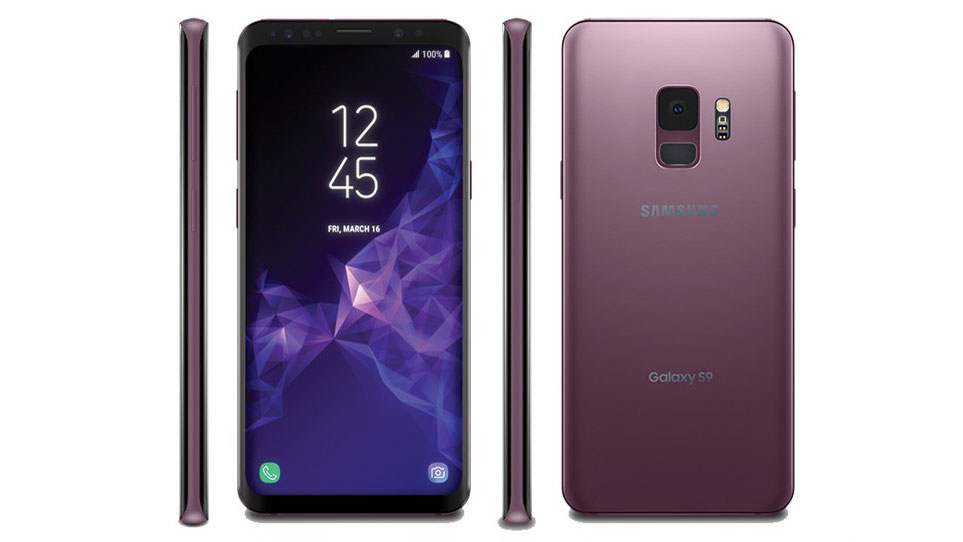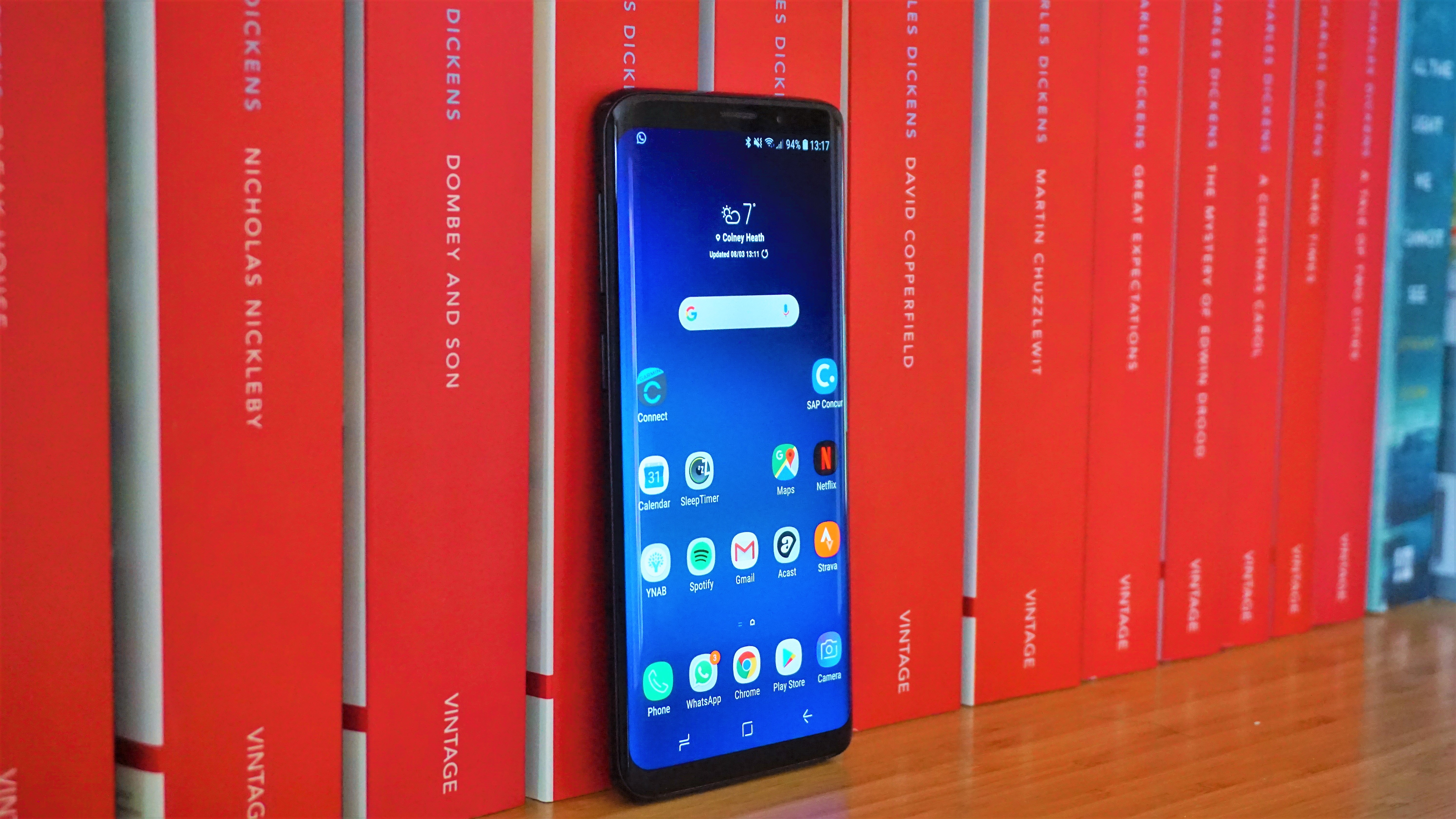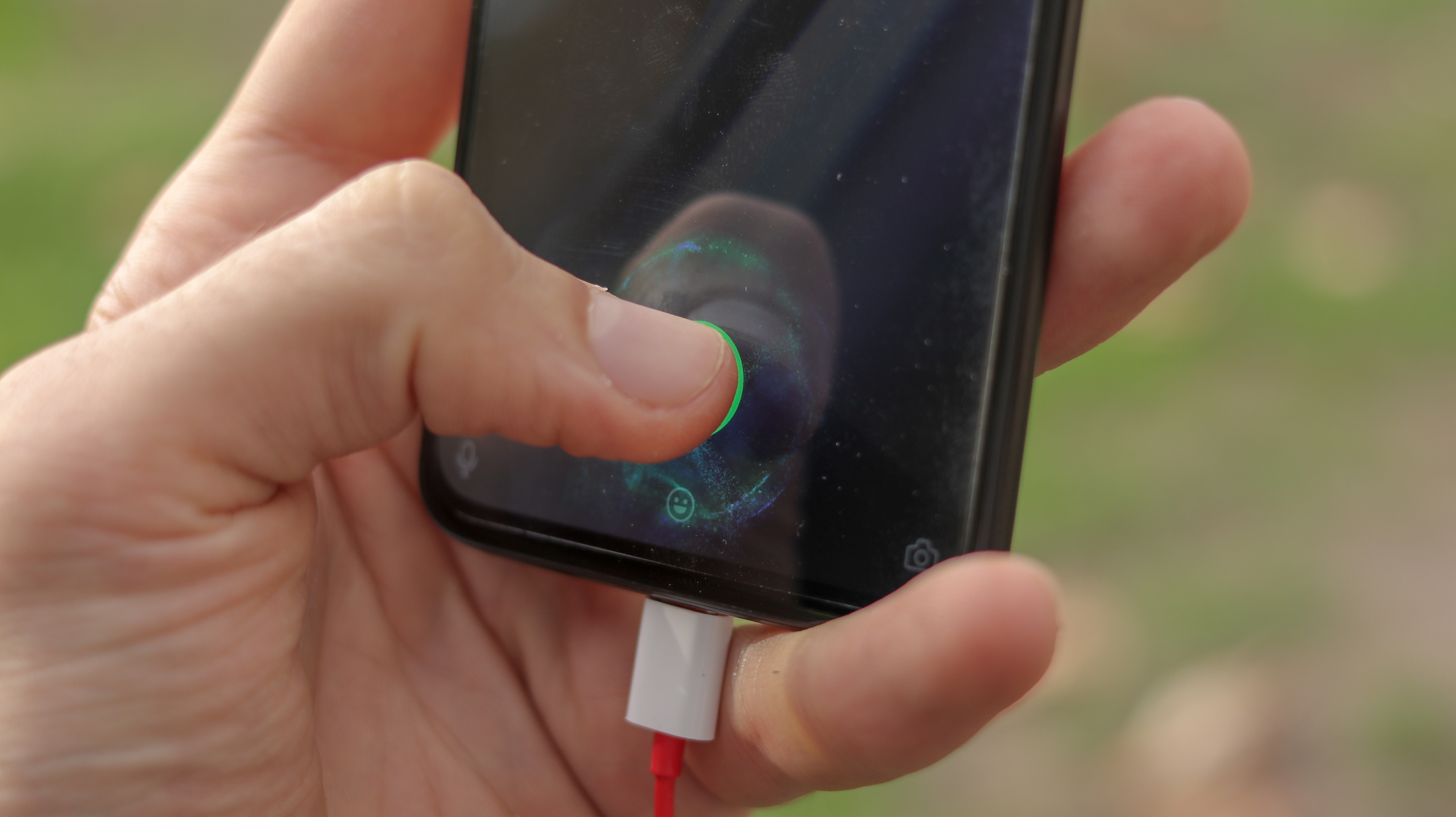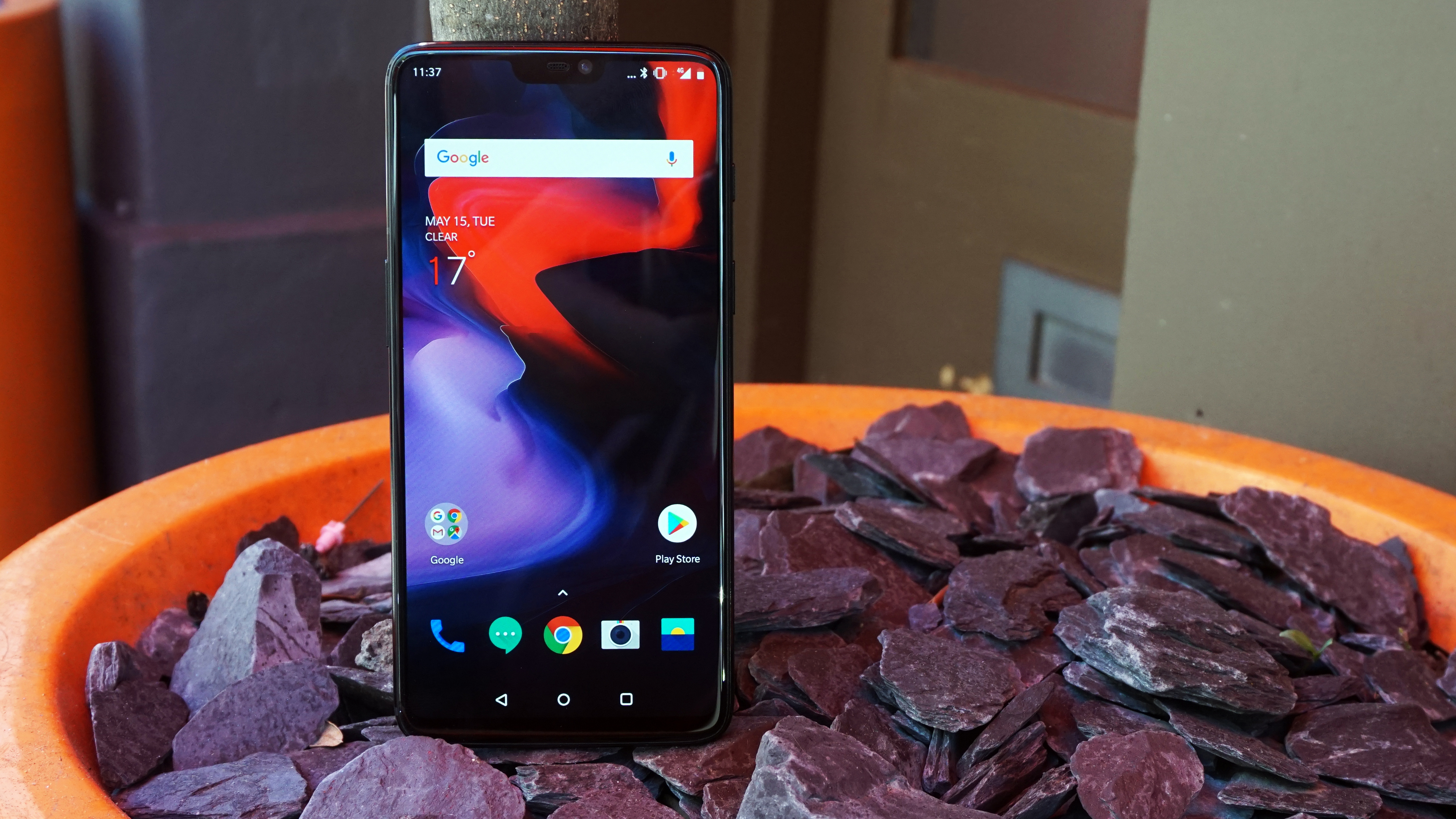Apple will unveil new hardware at today's special event but it will also release the iOS 12.1 software update bringing new features.
The post iOS 12.1 arrives today with Group FaceTime, new emoji, and more appeared first on Pocketnow.
Apple will unveil new hardware at today's special event but it will also release the iOS 12.1 software update bringing new features.
The post iOS 12.1 arrives today with Group FaceTime, new emoji, and more appeared first on Pocketnow.
The Pixel 3 XL just got a second notch. Yes, look at the image, there are two. Luckily this is a software glitch Google is already addressing.
The post Pixel 3 XL has two notches thanks to a bug, fix coming soon appeared first on Pocketnow.
Also today, we get another preview of a new iPad Pro model before tomorrow's event, Samsung's Android skin gets props and Xiaomi comes to bat in the UK.
The post OnePlus 6T is now official! | Pocketnow Daily appeared first on Pocketnow.
Sprint and T-Mobile want to merge. They may not be large enough to pose problems in and of themselves, but their prepaid properties might be.
The post New York Attorney General peers into Sprint and T-Mobile’s prepaid appeared first on Pocketnow.
What's worse than a huge notch at the top of your phone display? Try two notches! That's exactly what some Pixel 3 XL owners are currently experiencing, with a new glitch plopping an additional 'virtual' notch on the screen of Google's latest flagship device.
As reported by Android Police, several users have noticed a bug which randomly places a side-mounted second notch on the Pixel 3 XL's display, though unlike the very prominent hardware-based cutout at the top of the handset, this one exists solely in the digital realm.
Though the phantom notch has so far only reared its ugly head in a few isolated instances, users have already taken to social media to post pictures of their bugged-out phone displays, including Kyle Gutschow (whose picture can be seen above) and UrAvgConsumer (seen below).
According to several Reddit users who've experienced the software issue, the virtual notch does disappear after a restart of the device.
Thankfully, Google is aware of the problem, telling Android Police that a fix for the ghastly glitch is "coming soon".
Though we're not entirely sure why the Google Pixel 3 XL would even need a virtual notch cutout (especially one that doesn't hold any speakers, cameras or other sensors), there's no denying that it is indeed a funny sight. Horrifying, yes, but also funny.
Header image courtesy of Kyle Gutschow.
The telecom provider is weeks away from launching its new 5G network and it finally has revealed the first device that will traffic on it.
The post AT&T 5G “puck” revealed to be Netgear hotspot appeared first on Pocketnow.
Here is how you can get the ECG function in the Apple Watch Series 4 even if you live outside of the United States with a little change
The post You can activate the ECG monitor in the Apple Watch Series 4 outside the US appeared first on Pocketnow.
Qualcomm has been a big presence in recent days with OnePlus and the phone maker has been leveraging that to make confident claims about 5G.
The post OnePlus 5G phone to hit Europe first, will mark split in device lineup appeared first on Pocketnow.
OnePlus has officially unveiled its OnePlus 6T phone and, for once, it’ll be easier for US consumers to get it. T-Mobile is carrying the midrange smartphone starting on November 1, which is an auspicious moment: the first time a Chinese device titan's phone is being supported and sold by a US carrier.
OnePlus achieved this milestone before Xiaomi and Huawei, which is a definite feather in its cap. Whether this opens the door wider for other Chinese phone companies to expand into the US is hard to tell from here, but it’s definitely a progressive step.
Huawei was expected to be the first to have devices sold by US carriers, but two deals with AT&T and Verizon fell through just before CES 2018, reportedly due to political pressure, according to CNET. The US government had previously expressed concern that Huawei products could be used as backdoors to spy on Americans, and Congressional reports have raised national security concerns about Huawei and other Chinese device vendor ZTE.
It’s unclear what may differ between OnePlus and, say, Huawei that would bring the former to a partnership with a US carrier.
But the carrier’s investment is limited: T-Mobile is only selling the middle-specced $579 version of the phone (8GB of RAM/128GB of storage) in the glossy Mirror Black. If you wanted either the baseline $549 (6GB RAM/128GB storage) or top-tier $629 (8GB RAM/256GB storage) models, or one with the matte Midnight Black finish, you’ll have to buy them online.
The OnePlus/T-Mobile partnership progressed amid the backdrop of uneasy tensions from the simmering trade war between President Trump and China. One of the almost-casualties of the conflict, ZTE, has bounced back somewhat after a summer ban on importing US tech according to The Wall Street Journal, but it’s clear that this is a tricky time for Chinese companies to try entering the US market.
ZTE especially suffered from losing access to Qualcomm components. In contrast, OnePlus brought Qualcomm president Cristiano Amon on to the stage during the 6T launch event to explain the cozy partnership between both companies, which includes getting Snapdragon 845 chips in the 6T. (OnePlus is now the third-biggest customer of Qualcomm’s leading processors behind Samsung and LG, according to Reuters.)
With a US carrier on one side and a leading American chipmaker on the other, OnePlus seems to have sidestepped the obstacles that have blocked other Chinese device-makers from entering the US market. We’ll see whether that pays dividends for OnePlus, not to mention the companies that follow.
We've just heard about the OnePlus 6T, a new phone that has a few notable upgrades on the lauded OnePlus 6. Its beefed-up specs and features, along with the first in-screen fingerprint scanner in the US market, make it a real contender to challenge pricier devices.
While it may not be able to go toe-to-toe with high-priced flagships iPhone XS or Google Pixel 3, the 6T could compete against phones in the next-highest price tier.
So we’ve pitted the 6T against a suitable rival, the Samsung Galaxy S9, to see where the scrappy upstart stands in comparison with the king of modest flagship smartphones.

Samsung Galaxy S9
The Samsung S9 is the smaller of the pair at 147.7 x 68.7 x 8.5mm and 163g. Compare that to the OnePlus 6T at 157.5 x 74.8 x 8.2mm (barely larger than the OnePlus 6 to include the in-screen fingerprint sensor) and a slightly heavier 185g.
Each phone has a glass back and glossy finishes, though OnePlus 6T also has a matte texture, but that’s it for variety. That's unlike the array of colors that the Samsung S9 comes in, as you can only get the 6T in black (for now).
On the rear, the S9 has a fingerprint sensor below its camera while the 6T doesn’t: the new OnePlus phone’s notable feature is an in-screen sensor embedded in its front. In our testing, this worked really well.
The phones also contrast in their physical button layout. The S9 has its much-maligned dedicated Bixby button on the left side, which we occasionally accidentally pressed when toggling volume or sticking the phone in our pockets. The OnePlus 6T retains its predecessor’s three-position switch on the right side to shift between ring, vibration and silent mode, a convenience that’s rare in today’s phones.
Catch-all comparisons: The OnePlus comes with dual SIM capability, and so does the S9 - unless you’re buying one in the US, which is single-SIM only. The S9 has an official IP68 water and dust protection rating, while you’ll just have to take OnePlus’ word for it that the 6T is waterproof enough. Oh, and there’s one other big difference: the 6T lost its headphone jack, while the S9 still has one.
As with many Android smartphones, both phones appear so similar that it’s hard to give one an edge over the other, but the S9 has a slightly classier look, keeps its headphone jack and is available in a plethora of colors. The edge goes to Samsung’s phone, unless you absolutely have to have the largest device.

Speaking of size, there’s a real difference between the two phones, though that doesn’t tell the whole story.
The Samsung S9 has the smaller screen at 5.8 inches, but its AMOLED display comes in high-resolution Quad HD+ (2960x1440), which reaches an impressive 570 ppi pixel density.
The OnePlus 6T has a bigger 6.41-inch 19.5:9 AMOLED display, though its 2340x1080 resolution manages only 402 ppi.
You face a dilemma: better resolution or larger screen size? But the better question is, will you even notice? Possibly, as the S9 has one of the sharpest screens out there, and in side-by-side comparisons, the Samsung display was admittedly crisper. But you have to squint to see it.
The other differences are more stylistic. The S9 display comes with Samsung’s signature curved edges, which don’t just look cool - you can also enable gesture controls centered around these glossy margins, though you might forget about them (we did).
Then, of course, there’s the notch issue. The S9 doesn’t have one, though it’s essentially just blacked out the areas adjacent to the front-facing camera. The 6T has a notch, though it’s smaller than the vanilla OnePlus 6: they shifted around a sensor so the screen hugs the front camera closely. In any case, you can black out the “ears” adjacent to the camera if you crave a notchless life.
All told, the S9 wins this round, though the OnePlus 6T didn’t underperform by any means. It should be noted that the S9 also works with the Gear VR and Google VR setups, while it’s unclear if the 6T works with any VR setup. That’s not something everyone will care about, but it is added functionality.

While Samsung has taken its time slowly rolling out Android 9 Pie in different alpha and beta waves for testing, OnePlus 6T launches with it already installed. While we haven’t played around much with the updated OS on the phones, if newest is best for you, the 6T might have the edge.
But if we’re talking about brand OS overlays, that’s up to your taste.
The S9 comes with the suite of Samsung apps and interface, which doesn’t look to have changed too much for Android 9. The 6T, on the other hand, comes with the expected minimalist selection of OnePlus apps, which is better for the user that prefers third-party programs in a lightweight interface.
Performance-wise, the 6T comes packed with an octa-core Snapdragon 845 chip, and so does the Samsung S9 - but only in certain markets (including the US). In the EMEA regions, the S9 comes packed with the more powerful, Samsung-developed Exynos 9810 processor. The S9 only comes with 4GB of RAM, while the 6T can be bought with either 6GB or 8GB of RAM.
Going by Geekbench 4 reports, the S9 (Exynos 9810 edition) scored a respectable 8,721 points, which in our testing puts it only below a handful of newer Android phones as well as Apple’s iPhone X and iPhone XS. The new 6T, on the other hand, scored 8,846 on our Geekbench 4 tests.
The capacity of the 6T’s 3,700mAh battery surpasses the 3,000mAh battery in the S9. Just how much battery life the former has beyond the latter won’t be clear until we do some more testing with the two phones together.
Given its edge in specs, performance, and the fact that one phone already has Android 9 Pie while the other is taking its time rolling the new OS out, we’re giving this section to the OnePlus 6T.

The camera is where many midrange phones cut corners, but both the S9 and OnePlus 6T have respectable performance from very different setups.
The Samsung S9 packs only a single 12MP lens, but it’s dual aperture, and can shift between f/1.5 (for lower-light shots) and f/2.4 automatically (for brighter scenes). This works cleverly, but you can only get so much performance out of one lens.
The 6T has two lenses, a 16MP main and 20MP sensor, both at f/1.7. While it took great photos, users complained about poor low-light performance, so OnePlus added the Nightscape mode to address those concerns.
The S9 certainly has the edge in slow-motion footage: it’s capable of capturing 960fps at 720p for breathtakingly slow video (like, even more drawn-out than those slow-motion shots in Inception), Meanwhile, the 6T manages a respectable 480fps at 720p, or 240fps at 1080p.
Honestly, both phones have enough pros and cons that it might be up to taste. The S9 likely has an edge due to the more robust Samsung camera interface.

By price, the 6T has a significant advantage, as it starts at $529 / £499 for 6GB of RAM / 128GB of storage, $579 / £529 for a bump up to 8GB of RAM with the same 128GB space and a top version for $629 / £579 with 8GB of RAM and 256GB storage.
The S9 is priced higher, starting at $719 (£739/AU$1,199) for 64GB of storage with 4GB of RAM and climbing up to $839 for 256GB of space. But the phone has been out long enough that you can likely find a discounted unlocked version (perhaps on our handy US deals and UK deals pages.
It’s a bit easier to get your hands on a Samsung S9, which most carriers sell and support. It launched back in March, so even finding an unlocked phone shouldn’t be too hard.
The OnePlus 6T... not so much. T-Mobile is the only carrier selling the phone in the US, which goes on sale in stores and online on Nov 1 (or for European customers, Nov 6). And T-Mobile will only sell the 8GB RAM, 128GB storage model in mirror black for $629. Verizon will support the 6T, but not sell it.

The Samsung Galaxy S9 and OnePlus 6T are pretty evenly matched, which is a testament to OnePlus as the underdog here. But in terms of sheer value, we’d give the match to the 6T.
Of course, there’s a lot more going on than a simple cost-to-specs equation. The OnePlus lacks the heavily-refined Samsung interface that packs a lot of bells and whistles in its fancy frame. The 6T also has a notch and also dispensed with its headphone jack.
In other words, it’s kind of a photo finish between these similar-looking but notably different phones, and the final boost may come down to which interface you prefer and which features you can’t live without.
Think hard on whether you want the Samsung S9’s very seasoned setup or if pure capability at a seriously affordable price tips your hand in favor of the OnePlus 6T.
If you're planning on getting new gear, a MacBook Pro from Apple or other tech-related accessories,B&H is probably the best place to start looking right now
The post Huge savings on Apple products during “Shop and Save Early” from B&H appeared first on Pocketnow.
The phone has just been announced with a great bevy of features and hardware. We got to test it out over the past 24 hours. Here's our story.
The post OnePlus 6T after 24 hours — our hands-on experience (Video) appeared first on Pocketnow.
It was only earlier in 2018 that we got the OnePlus 6, but now already the OnePlus 6T is here and although it doesn’t have a new number in the name quite a lot has changed.
The OnePlus 6T has a bigger screen, a larger battery, a refined design and even some new features, among other changes. But there are plenty of similarities between the two phones as well.
So for a complete overview of what’s new, what’s improved, and what’s not, read on, as we compare the OnePlus 6T and OnePlus 6 across every aspect that matters.
Both the OnePlus 6T and OnePlus 6 have a metal frame and a slightly curved glass back, but there are some differences between them.
For one thing, while the OnePlus 6T is 157.5 x 74.8 x 8.2mm and 185g, the OnePlus 6 is 155.7 x 75.4 x 7.75mm and 177g. So the differences here aren’t major, but the OnePlus 6T is slightly taller, thicker and heavier than the OnePlus 6, which are perhaps not differences you’d have expected.
The differences to the look of the OnePlus 6T are more favorable though, as it has a much smaller notch and it’s in a teardrop shape, rather than a rectangle. Also, the glass of the back is less broken up as there’s no fingerprint scanner on the rear – instead it’s built into the screen.
The available colors also differ, as while both phones come in Midnight Black and Mirror Black, the OnePlus 6 is additionally available in Amber Red and a limited-edition Silk White – though don’t be surprised if the OnePlus 6T gets additional shades down the line.

The OnePlus 6T has a 6.41-inch 1080 x 2340 AMOLED display with an aspect ratio of 19.5:9, while the OnePlus 6 has a 6.28-inch 1080 x 2280 AMOLED screen with an aspect ratio of 19:9.
So the OnePlus 6T has a slightly larger, slightly higher resolution screen, though the OnePlus 6 is hardly small, and both phones have a pixel density of 402 pixels per inch.
The OnePlus 6T should also have a tougher display, as it’s protected by Gorilla Glass 6, while the OnePlus 6 uses Gorilla Glass 5.
Visually the two screens are also quite different because, as noted above, the OnePlus 6T has a small teardrop notch, while the OnePlus 6 has a larger rectangular one.
As such the OnePlus 6T has slightly more of an all-screen design, with an 86% screen-to-body ratio (up slightly from around 83.8% on the OnePlus 6), though both phones have a thin bezel below the display.
OnePlus also claims that the 6T’s display is the company’s most power efficient and comfortable-to-view, as well as having improved brightness levels, chromatic accuracy and color ranges.
The OnePlus 6T and OnePlus 6 both use a Snapdragon 845 chipset and come with either 6GB or 8GB of RAM, so there’s no difference there.
Both phones also come with either 128GB or 256GB of storage, though there’s additionally a 64GB model for the OnePlus 6, and while the OnePlus 6T ships with Android 9 Pie, the OnePlus 6 is now upgradable to it, so the operating system is much the same too.

There's little difference in OS or power
There are some tweaks to the interface though. For example, because the fingerprint scanner is built into the screen on the OnePlus 6T, you can continue pressing the display after the phone is unlocked to bring up a customizable app shortcut, making it faster to get into your favorite apps.
The OnePlus 6T also adds Smart Boost to the mix. This is a feature that’s designed to make apps start up faster, by storing data from frequently used apps in the phone’s RAM.
Both the OnePlus 6T and OnePlus 6 have a dual-lens camera on the back, comprised of a 16MP f/1.7 sensor with optical image stabilization (OIS) and a 20MP f/1.7 one without OIS. Both phones also have a 16MP f/2.0 camera on the front.
However, there should be some improvements to the OnePlus 6T’s camera under the surface, as it apparently uses a new algorithm to optimize the settings for faces, text, food and night scenes.
The battery has had a bigger change though, as it has gone up from 3,300mAh on the OnePlus 6 to a much healthier 3,700mAh on the OnePlus 6T. Both phones support fast charging though.
Hopefully the larger size will lead to increased life – the OnePlus 6 lasts a fairly ordinary one day of moderate use in our tests, but we’ll let you know how the 6T stands up once we’ve put it through a full review.
The OnePlus 6T will hit stores on November 6 and costs $549 / £499 (about AU$780) for a version with 6GB of RAM and 128GB of storage, rising to $579 / £529 (about AU$825) for 8GB of RAM and 128GB of storage, and topping out at $629 / £579 (approximately AU$895) for 8GB of RAM and 256GB of storage.
The OnePlus 6 on the other hand starts at $529 / £469 (around AU$750) for a version with 6GB of RAM and 64GB of storage, so that’s slightly less than the starting price of the 6T but with half the storage.

Both handsets undercut most flagship phones
There’s then a version with 8GB of RAM and 128GB of storage for $579 / £519 (roughly AU$825), and a model with 8GB of RAM and 256GB of storage for $629 / £569 (approximately AU$895). So the comparable models are priced the same whether you choose a OnePlus 6 or 6T.
Of course, stores are likely to start offering the OnePlus 6 for less now that the OnePlus 6T is out, but equally you might not be able to get hold of the older phone anywhere for much longer.
The OnePlus 6T is a significant upgrade in some ways and not much of one at all in others. The in-screen fingerprint scanner and smaller notch are perhaps the headline features, but you also get a bigger battery, a slightly larger screen and behind the scenes improvements to both the screen and camera if you opt for the OnePlus 6T.
Power and storage on the other hand aren’t much changed – though it’s nice to see OnePlus retiring the 64GB size that it offered the OnePlus 6 in.
The 6T probably isn’t a phone to upgrade to if you already have the OnePlus 6 (and you really probably shouldn’t be upgrading your phone every six months anyway), but if you’re rocking an older or lower end handset then it could be a strong choice, especially as it costs around the same amount as its predecessor.
For the first time, OnePlus has gotten one of its phones onto a US network. And its fans believe it couldn't have picked a better choice.
The post Teaming with T-Mobile, OnePlus 6T goes Un-carrier appeared first on Pocketnow.
This Android phone has been promoted to give consumers "the speed you need," and it's been better positioned than any of its predecessors to do so.
The post OnePlus 6T announced as a tap into the future appeared first on Pocketnow.